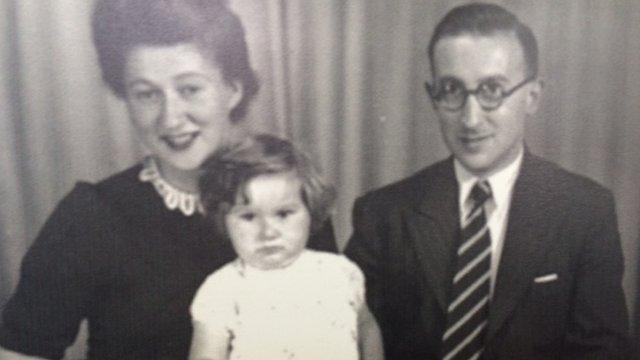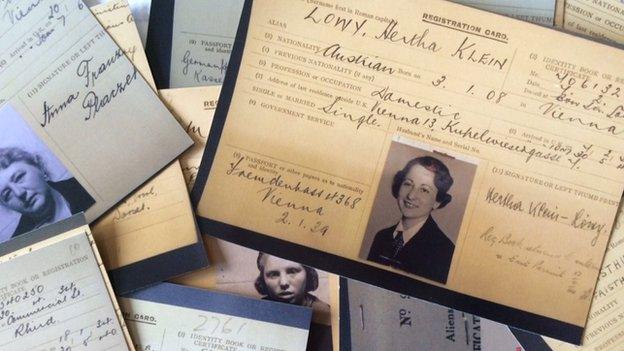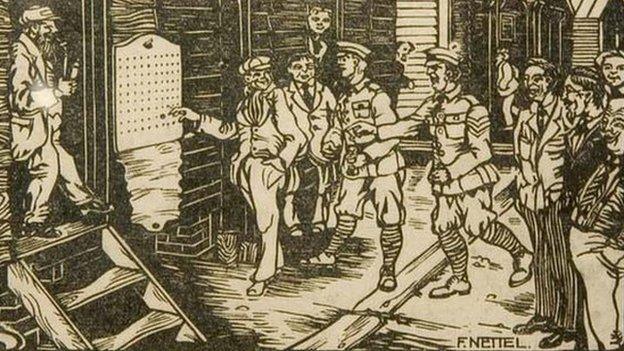Exhibition on Europe's only female internment camp on Isle of Man
- Published

About 3,000 women were transported to the Isle of Man in 1940
Stories from Europe's only female World War Two internment camp have been explored in an exhibition.
The Rushen Internment Camp was opened on 29 May 1940 and detained 3,000 women who had been arrested in Britain and transported to the Isle of Man.
The civilian camp boundaries around Port Erin and Port St Mary initially captured both villages in their entirety, which effectively interned residents as well.
Several island camps were set up at the request of the UK government.
Other internment areas were established in Douglas, Ramsey and Peel to hold people that were essentially political prisoners based on their nationality, with many of those held Jewish refugees.
The exhibition 'Friend or Foe?' draws from a book of the same name, published by Rushen Heritage Trust in 2018.
The trust's director Ali Graham has curated this exhibition and was one of the book's authors.

The southern internment camp detained women arrested in Britain
Ms Graham's grandmother ran a guest house on Port St Mary promenade, where internees were housed.
She said: "It is a truly fascinating story of a remarkable period in Manx history.
"The local landladies, hotel and homeowners had their own anguish as their menfolk were away fighting in the various forces and, at the same time as the evacuation at Dunkirk, they were forced to accommodate these internees."
During the period, internees had some freedoms and were allowed access the beaches, cinema and church halls where concerts were held.
However, travelling between Port Erin and Port St Mary was only possible under escort, which had to be provided by the officers from the London Metropolitan Police, as there were no female Manx police officers at the time, Ms Graham explained.
The number of internees reduced over time as many applied for release once they could provide a UK address, leaving about 900 on Manx soil in 1943.
About 600 of those were repatriated to Germany the following year, with the remainder returning home in 1945 when the camp was closed.
The exhibition is to run at the Rushen Heritage Centre until 29 July.

Why not follow BBC Isle of Man on Facebook, external and Twitter, external? You can also send story ideas to IsleofMan@bbc.co.uk, external
Related topics
- Published28 July 2016

- Published29 May 2015

- Published20 August 2014
